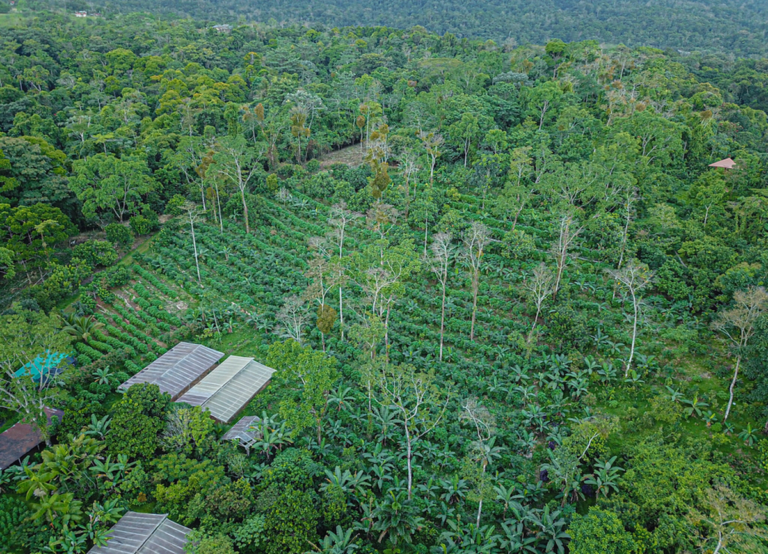Millet Based Agroforestry: A Simple Path to Sustainable Farming
Millet-based agroforestry is a farming method that combines millet cultivation with tree planting. It’s like having the best of both worlds—growing nutritious millets and trees together. This approach is wonderful because it helps farmers, the environment, and the communities they live in.
What is Millet Based Agroforestry?
Millet-based agroforestry is an ecologically sound agricultural practice that involves the cultivation of millet crops in conjunction with the deliberate placement of trees within the same plot of land. The integration of millets with beneficial tree species in agricultural practices is a method that has been found to have positive effects on soil fertility, biodiversity, and farmer income. This technique not only promotes environmental protection but also contributes to long-term agricultural sustainability.
Types of Millets Suitable for Agroforestry
Agroforestry practices are compatible with various varieties of millets on account of their adaptability and resilience in diverse agricultural environments. The following millets are frequently utilized in agroforestry:
Pearl Millet (Pennisetum glaucum): Pearl millet is a drought-tolerant millet variety, making it suitable for agroforestry in arid and semi-arid regions. It has deep roots, which help stabilize the soil and prevent erosion.
Finger Millet (Eleusine coracana): Finger millet is known for its nutritional value and ability to grow in various soil types. It is often grown alongside trees in agroforestry systems, providing a valuable source of food and income.
Foxtail Millet (Setaria italica): Foxtail millet is well-suited for agroforestry due to its short growing season and ability to thrive in poor soil conditions. It is commonly grown alongside nitrogen-fixing trees to enhance soil fertility.
Barnyard Millet (Echinochloa spp.): Barnyard millet is a fast-growing millet variety that is adaptable to different agroforestry setups. It matures quickly, making it a popular choice for intercropping with trees.
Little Millet (Panicum sumatrense): Little millet is a small-grained variety that grows well in agroforestry systems. It requires minimal water and is often cultivated alongside trees that provide shade and support its growth.
Kodo Millet (Paspalum scrobiculatum): Kodo millet is suitable for agroforestry in regions with limited water availability. It is a hardy crop that can withstand drought conditions, making it a valuable choice for sustainable farming practices.
Farmers pick certain types of millet based on the temperature, land, and agroforestry goals in their area. Farmers can make their agroforestry systems work better by choosing the right types of millet. This way, both millets and trees can grow in peace.
Benefits of Millet Based Agroforestry
Millet-based agroforestry offers a range of benefits, making it a valuable and sustainable farming practice. Here are some key advantages:
Soil Conservation: The deep roots of trees planted in agroforestry systems help prevent soil erosion. This is crucial for maintaining fertile soil for millet cultivation and preserving the land for future generations.
Biodiversity Enhancement: Agroforestry systems promote biodiversity by providing various habitats for birds, insects, and other animals. This biodiversity supports a healthier ecosystem and can help control pests naturally.
Carbon Sequestration: Trees in agroforestry systems absorb carbon dioxide from the atmosphere, mitigating the effects of climate change. This natural process helps reduce the overall carbon footprint of farming activities.
Diversification of Income: Farmers can earn income from both millet crops and tree products. Trees can be a source of timber, fruits, nuts, or medicinal products, providing additional revenue streams for farmers.
Increased Crop Yields: Trees provide shade, which can protect millet crops from extreme weather conditions. Additionally, the nutrient-rich leaf litter from trees enriches the soil, leading to higher millet yields over time.
Reduction in Input Costs: Properly managed agroforestry systems require fewer external inputs like fertilizers and pesticides. The natural processes within the system reduce the need for costly agricultural inputs, making farming more affordable and sustainable.
Food Security: Millets are highly nutritious grains. By integrating millet cultivation with agroforestry, communities can ensure a stable food supply. This contributes to food security, especially in regions where millets are staple foods.
Empowerment of Local Communities: Agroforestry projects often involve local communities in their planning and implementation. This participation empowers communities, enhances their agricultural knowledge, and fosters a sense of ownership and responsibility toward sustainable farming practices.
Preservation of Indigenous Agricultural Practices: Millet-based agroforestry often incorporates traditional farming methods, preserving indigenous knowledge and practices. This cultural preservation is important for maintaining unique agricultural heritage and promoting sustainable farming techniques.
Environmental Sustainability: By promoting natural processes and reducing reliance on synthetic inputs, millet-based agroforestry contributes to long-term environmental sustainability. It conserves natural resources, protects ecosystems, and supports overall ecological balance.
Millet-based agroforestry offers a holistic approach to farming, benefiting farmers, communities, and the environment. By harnessing the synergy between millets and trees, this practice creates a sustainable agricultural model that addresses various economic, social, and environmental challenges faced by farming communities around the world.

Integration of Trees and Millets
The integration of trees and millets in agroforestry systems is a strategic approach that maximizes the benefits of both components. Here’s how trees and millets can be effectively integrated:
Choosing the Right Trees:
- Nitrogen-Fixing Trees: These trees, such as acacia and leguminous species, have nodules on their roots that host nitrogen-fixing bacteria. They enrich the soil by adding nitrogen, an essential nutrient for plant growth.
- Shade-Providing Trees: Trees like neem or mango provide shade, protecting millet crops from excessive sunlight and heat stress. Adequate shading can improve millet yield and quality.
- Soil-Enriching Trees: Some trees, like mulberry and agroforestry-specific species, enhance soil fertility by adding organic matter to the soil. Their leaves and branches decompose, enriching the soil with nutrients.
Companion Planting Techniques:
- Beneficial Plant Combinations: Certain trees have mutually beneficial relationships with millets. For example, tall trees provide shade for shorter millet varieties without competing for resources. Planting compatible species together promotes healthy growth for both trees and millets.
- Natural Pest Management: Trees can host natural predators of millet pests, reducing the need for chemical pesticides. This biological control helps maintain a balanced ecosystem, ensuring millet crops remain healthy.
Optimal Spacing and Arrangement:
- Spacing: Proper spacing between trees and millet rows is crucial. It allows both components to receive adequate sunlight, water, and nutrients. Close spacing may lead to competition, while excessive spacing might underutilize the available land.
- Arrangement: Consider the orientation and layout of trees and millet rows. Rows can be alternated or staggered, ensuring efficient use of space and resources.
Management Practices:
- Pruning and Thinning: Regular pruning of tree branches prevents overcrowding and ensures optimal light penetration. Thinning out excess trees maintains the balance between trees and millets, preventing competition for resources.
- Mulching: Tree leaves can be used as mulch around millet plants. Mulching conserves soil moisture, suppresses weed growth, and enriches the soil as the mulch decomposes.
Diversifying Tree Species:
- Polyculture: Planting a variety of tree species enhances biodiversity within the agroforestry system. Different tree species contribute various benefits, creating a more resilient and ecologically diverse environment.
Continuous Monitoring and Adaptation:
- Observation: Regularly monitor the agroforestry system to identify any signs of stress or imbalance among the trees and millets.
- Adaptation: Based on observations, adjust tree density, species composition, or millet varieties to maintain a harmonious balance within the agroforestry system.
Farmers can make healthy agroforestry systems that make the best use of land, save resources, and improve the health of both plants by carefully combining trees and millets. This leads to higher output and benefits for the environment.

Challenges and Solutions
Challenges in Millet-Based Agroforestry:
Climate Variability:
- Challenge: Unpredictable weather patterns, including droughts and floods, can adversely affect millet and tree growth.
- Solution: Implement climate-smart agricultural practices, such as rainwater harvesting and efficient irrigation techniques, to mitigate the impact of climate change.
Limited Access to Markets:
- Challenge: Farmers often face challenges in accessing markets to sell their millet and tree products at fair prices.
- Solution: Strengthen market linkages through farmer cooperatives and agricultural networks. Establish direct partnerships with buyers, processors, and retailers to ensure a reliable market for products.
Lack of Knowledge and Resources:
- Challenge: Farmers might lack awareness of the best agroforestry practices or have limited access to resources and training.
- Solution: Provide comprehensive training programs, workshops, and extension services to educate farmers about sustainable agroforestry techniques. Offer subsidies or grants to help farmers acquire necessary resources like seeds and tools.
Pest and Disease Management:
- Challenge: Pests and diseases can damage both millet crops and trees in agroforestry systems.
- Solution: Implement integrated pest management strategies, combining biological control methods, natural predators, and organic pesticides. Regular monitoring and early intervention can prevent widespread damage.
Land Tenure Issues:
- Challenge: Unclear land tenure and property rights can discourage farmers from investing in agroforestry, fearing land disputes.
- Solution: Collaborate with local governments and organizations to clarify land tenure rights and provide legal support to farmers. Secure long-term land leases or titles to encourage agroforestry investments.
Technological Barriers:
- Challenge: Limited access to modern agricultural technologies can hinder the adoption of efficient farming practices.
- Solution: Promote the use of mobile applications, agricultural drones, and precision farming techniques. Provide training and technical support to farmers to help them utilize these technologies effectively.
Innovative Solutions:
Climate-Resilient Crop Varieties:
Solution: Develop and promote climate-resistant millet varieties that can withstand extreme weather conditions, ensuring more reliable yields even in adverse climates.
Value Addition and Processing:
Solution: Encourage farmers to add value to their millet and tree products by processing them into marketable items like millet flour, snacks, or herbal products. This diversification can increase profitability.
Community Engagement and Empowerment:
Solution: Foster community participation by organizing workshops, knowledge-sharing events, and farmer field schools. Empower local communities to take ownership of agroforestry initiatives.
Research and Development:
Solution: Invest in research to develop innovative agroforestry techniques, pest-resistant varieties, and sustainable farming practices. Research findings can inform farmers and improve the overall efficiency of agroforestry systems.
Financial Support and Subsidies:
Solution: Provide financial incentives, subsidies, and low-interest loans to farmers engaging in agroforestry. Financial support can ease the initial investment burden and encourage more farmers to adopt sustainable practices.
Stakeholders can encourage the broad use of millet-based agroforestry by coming up with new ways to deal with these problems. This will ensure healthy farming practices, economic growth for farmers, and environmental protection.
Conclusion
Agroforestry based on millet is an example of sustainable agriculture. Farmers can strengthen communities, safeguard the environment, and assure a steady income by combining millets and trees. By leveraging appropriate knowledge and practices, this approach has the potential to revolutionize agriculture, thereby contributing to environmental sustainability and securing a brighter future. Embrace agroforestry based on millet in order to foster a sustainable future for all.
FAQ
Q: What is Millet-Based Agroforestry?
A: Millet-based agroforestry is a sustainable farming practice that combines the cultivation of millet crops with strategically planted trees. This approach enhances soil fertility, biodiversity, and farmer income by integrating millets with beneficial tree species, promoting environmental conservation and long-term agricultural sustainability.
Q: How does Millet-Based Agroforestry benefit farmers?
A: Millet-based agroforestry benefits farmers by providing additional sources of income through tree products and enhancing millet yields. It promotes soil health, reduces erosion, and creates a balanced ecosystem, leading to more resilient and sustainable farming practices.
Q: What types of millets are commonly used in agroforestry?
A: Common millets used in agroforestry include pearl millet, finger millet, foxtail millet, barnyard millet, little millet, and kodo millet. These millet varieties are chosen based on their adaptability to different environments and their ability to thrive alongside trees.
Q: How do trees benefit millet crops in agroforestry systems?
A: Trees provide shade, enrich the soil, and attract beneficial insects, creating a conducive environment for millet crops. They also help in conserving soil moisture, preventing erosion, and acting as windbreaks, enhancing the overall growth and yield of millets.
Q: Is Millet-Based Agroforestry environmentally friendly?
A: Yes, millet-based agroforestry is environmentally friendly. It promotes biodiversity, conserves soil and water resources, sequesters carbon dioxide, and reduces the need for chemical inputs. It contributes to a healthier ecosystem and mitigates climate change effects.
Q: How can farmers get started with Millet-Based Agroforestry?
A: Farmers can start by selecting appropriate millet varieties and compatible tree species based on their region and goals. Seeking guidance from agricultural extension services, attending training workshops, and connecting with agroforestry experts can provide valuable insights to get started.
Q: What is the difference between Millet-Based Agroforestry and Agroforestry in general?
A: Agroforestry is a broader farming practice that integrates trees or shrubs with crops or livestock on the same agricultural land. Millet-based agroforestry is a specific type of agroforestry where millet crops are the primary focus, cultivated alongside trees for mutual benefits. While agroforestry encompasses various crop options, millet-based agroforestry specifically emphasizes the integration of millets and trees for sustainable farming.
Also Read:







